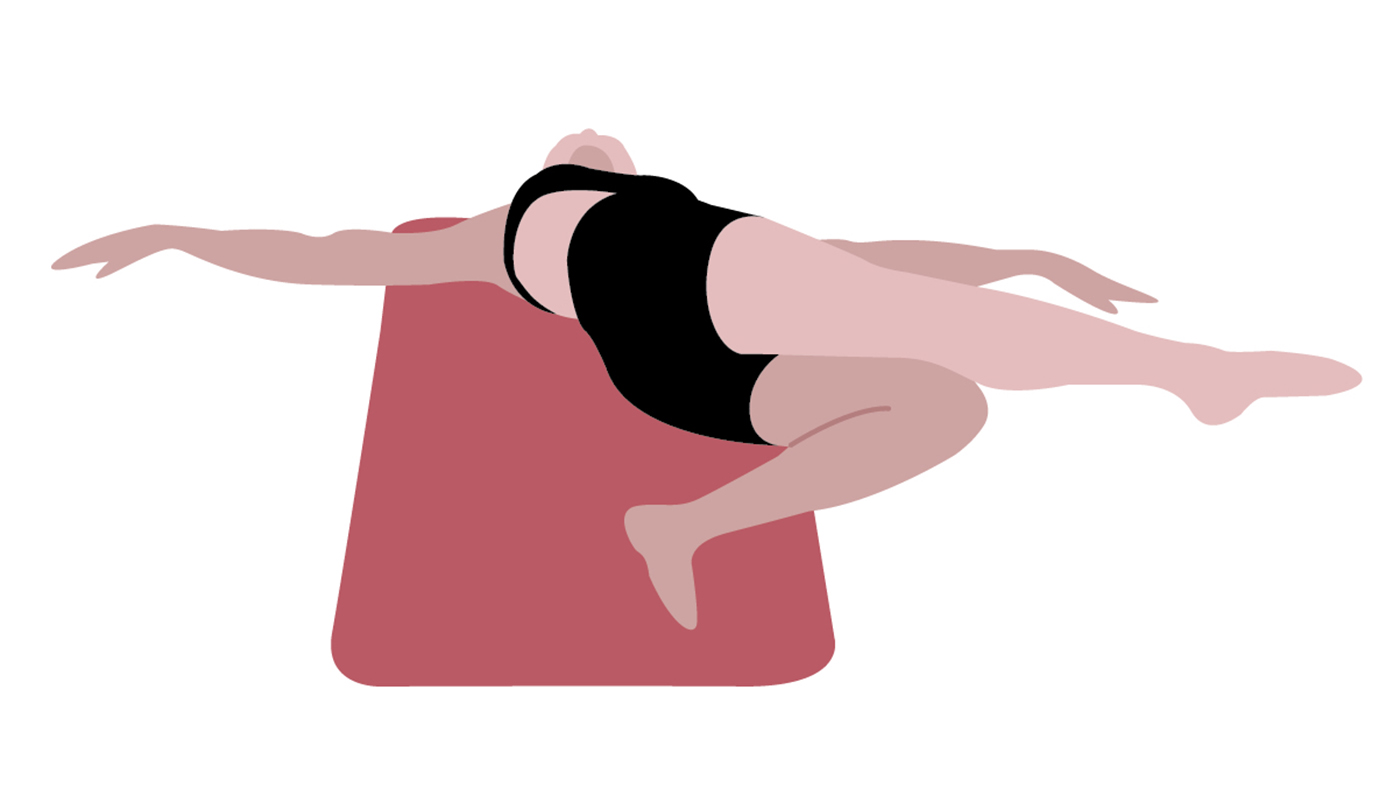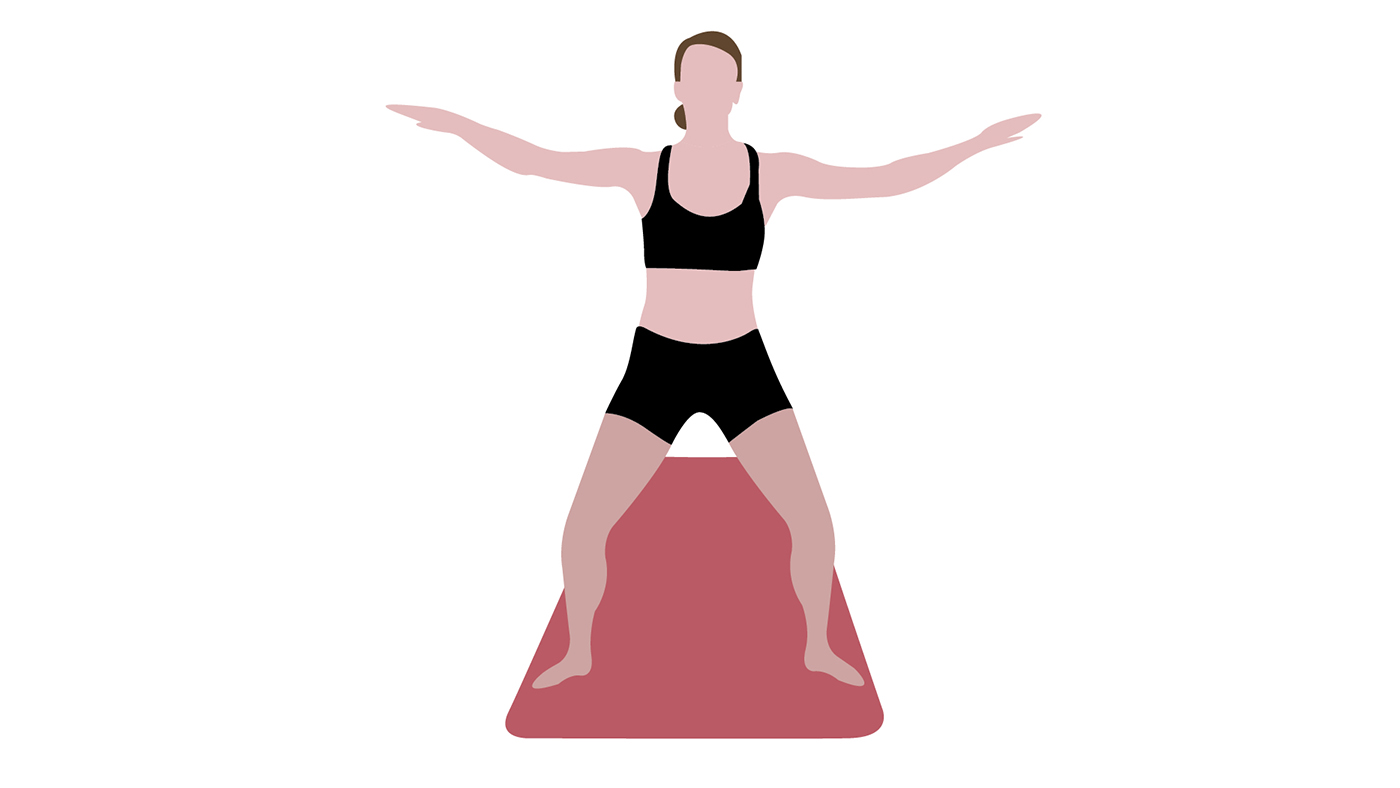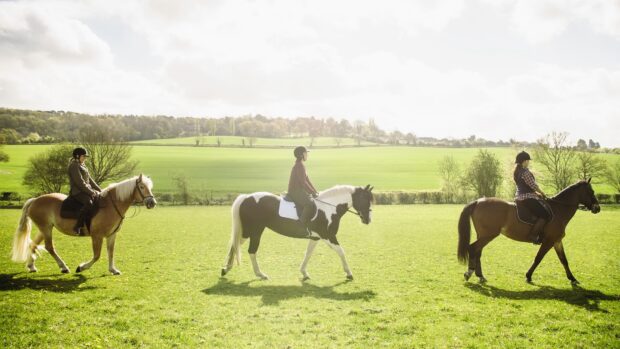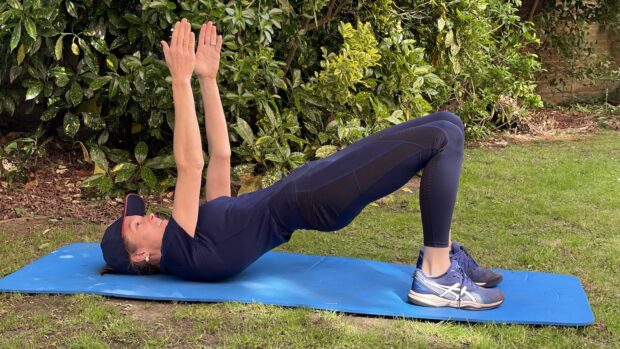In the second of this five-part fitness series, chartered physio Sarah Claridge targets flexibility to help you bend with your horse on a circle, and build control of your hips and pelvis
In the second of this five-part rider fitness series, we focus on rider flexibility – here are three more rider-focused exercises for stretching, cardio and strength/endurance to help keep those riding muscles in gear. Remember to start at a level you feel comfortable with before moving up to more advanced techniques.
- Missed day one? Check out the previous exercises for horse riders.
Take care: With any new form of exercise, your body needs to build up gradually to avoid strain. Seek the advice of a chartered physiotherapist if you are unsure if you should do any exercises due to underlying health conditions.
Particular caution applies if you have any cartilage injuries in your knees or joint replacements; avoid the cardiovascular exercises if you have any unstable cardiac health problems, acute disc bulges/prolapses or referred leg pain, pins and needles, numbness, rheumatoid arthritis, osteoporosis, gynaecological conditions – or if you are pregnant or undergoing cancer treatment.
Stretching for rider flexibility
Arm openers
- 10 secs, 6 reps 3 sets
You will need: an exercise mat. Don’t have one? Here are our favourites.
Lie on your side with your head supported on a pillow and your knees bent at a 90-degree angle. Reach your arms out in front of you, with your hands together.
Rotate the upper arm upwards and outwards from your trunk. Try to rotate as far as you can, without forcing the shoulder. Hold in the maximum position. You can adjust the level at which you rotate by adjusting the angle of your knees.
Trunk rotation in crook, upper-leg extension
- 10 secs, 6 reps, 3 sets
You will need: an exercise mat. Don’t have one? Here are our favourites.
Lie on your back with your legs bent and feet flat on the floor. Rest your arms gently out to the side.
Drop both your knees over to one side, aiming to keep your shoulders on the floor. When your legs are as far as they can go, straighten the knee on your top leg to increase the stretch in your back. Hold this position, ensuring you breathe steadily throughout.
Sarah says: “These stretches encourage rotational flexibility through your shoulder, ribcage and back. It should help your ability to isolate different parts of your body while riding, such as on a serpentine or circle. Being flexible through your body will help you absorb your horse’s movements and energy so you can move more in sync.
“Try to breathe out as you stretch, relaxing into the length of your back. You can always hold this for longer than 30 to 40 seconds, which is nice to do at the end of the day.”
Cardio
 Jumping Jacks
Jumping Jacks
Stand upright with your feet together. Jump upwards and open your legs outwards, and at the same time bring your arms upwards so you are making a star pattern.
Land gently using your knees and hips to cushion the landing and then immediately spring back to the start position, and bring your arms down by your sides. Continue this movement in a fluid and controlled manner.
To make this lower impact, step from side to side instead of jumping, still lifting and lowering your arms with each step. To make this harder, your arms can be raised above your head to clap your hands instead of stopping at shoulder height.
Start with six sets of 10 reps and build up to three sets of 30 seconds with a 20-second rest between sets. Move on to 40 seconds with a 20-second rest break between each of the three sets.
Sarah says: “This is a great exercise to help build our cardiovascular fitness, which is especially key if you are riding multiple horses per day or competing.
Strength and endurance for rider flexibility
Hip skates level 1 (beginner)
- 20 reps, 3 sets
Stand on one leg as you slide the other foot along the floor, back and up. Hold onto something if required for light support and balance. Make sure your knee on the supporting leg does not bend beyond your toes. Aim to keep the kneecap over the middle two toes.

Hip skates level 1 and 2
Hip skates level 2 (moderate)
- 20 reps, 3 sets
Stand on one leg, lift and lower one knee, skating the leg out to the side and back. Stay on one leg until you start to feel the muscles in the thigh and bottom/hip on the leg you are standing on – this may take 10 to 30 repetitions. Then change legs/sides.
Hip skates level 3 (challenging)
- 20 reps, 3 sets
Add arms into the exercise by raising them as you slide the foot outwards and lower as you bring the leg back in again.
Add a little single-leg squat on the stance leg as you skate the other leg out for increased difficulty. Then swap legs. Further progression would be to add a manageable weight into the hands.
Take a 10 to 15-second break in between sets, and build up to three sets of 30 seconds with a 20-second rest break between sets. Move on to 40 seconds with a 20-second rest break.
Sarah says: “This exercise helps build up the control and endurance of the hip and pelvis, which are key for canter aids and any lateral work, flying changes and to improve rider straightness.”

Hip skates level 3
About Sarah: Chartered physiotherapist Sarah Claridge runs Meadow Physio and Pilates, specialising in rider strength and fitness. Visit meadowphysioandpilates.com for online classes and one-to-one sessions to help improve your body’s optimal performance. Follow on Instagram.
Exercise mats
When choosing which exercise or yoga mat to go for, there are two key elements to consider – grip and thickness.
Grip is a combination of the materials the mat is made from and the surface design, such as bumps or ridges. Polyurethane is known for providing a particularly good grip, so look out for those made of this or have a polyurethane top layer. But most mats will offer a sufficient grip for the majority of activities.
Thickness is important as a thick mat provides cushioning for your knees, elbows, hips, your tailbone and other potentially painful areas. Yoga mats usually range from 1–6mm, but general exercise mats can come thicker. You should opt for a thicker mat if you find harder floors to be uncomfortable on your knees or hips, while you should go for a thinner mat if you work out on carpet as thicker mats on carpet can make it difficult to balance.
Here are some exercise mats worth considering
Nyamba Comfort Fitness floor mat
RRP: £24.99 |
This mat is 15mm thick – thicker than your average mat – so it will offer plenty of cushioning on a hard floor.
View now at decathlon.co.uk

Sporteon TPE Eco yoga mat
RRP: £11.99 |
This anti-tear, non-slip mat is eco-friendly, antibacterial and sweatproof.
View now at amazon.co.uk

Yogamatters Eco Rise yoga mat
RRP: £45 |
Made from sustainably harvested natural tree rubber, this mat has a super grip.
View now at amazon.co.uk

Yoga-Mad Warrior Plus mat
RRP: £29.99 |
This lightweight mat is 6mm thick and suitable for all sorts of home exercise.
View now at amazon.co.uk
You might also be interested in:

Three simple exercises to get you started on your riding fitness journey

H&H’s 12 days of fitness: Hone your riding muscles through dynamic power

Subscribe to Horse & Hound magazine today – and enjoy unlimited website access all year round
Horse & Hound magazine, out every Thursday, is packed with all the latest news and reports, as well as interviews, specials, nostalgia, vet and training advice. Find how you can enjoy the magazine delivered to your door every week, plus options to upgrade your subscription to access our online service that brings you breaking news and reports as well as other benefits.




 Jumping Jacks
Jumping Jacks


